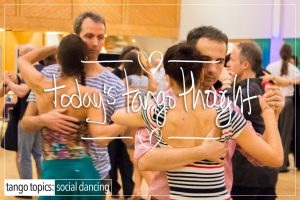Architecture. There are certain things we want to do with our bodies in relation to Argentine Tango and Social Dancing, one of them is to ‘close our fingers’ or bring our fingers together in every possible place where we lay our hands on our partners or they come into contact with our partner’s bodies.
A question that comes up for a lot of people is ‘Why ?’ do we have to do that. Why is this important ? The simplest answer is usually the right one: We don’t want to look like we’re grabbing our partners. At the same time we also don’t want to look like we have a lot of muscular tension in our fingers, hands, and wrists. All for the same reasons. We actually want to relax our hands as much as possible. Less muscled tension is a good thing, not more.
There’s another reason why. We’re emulating polite society as much as possible. The dance has a lot of hold-overs from the 19th century, and this is one of them. We present our partners in a good social light, we exude good manners at all possible points along the social curve from cabeceo/mirada, to getting to our intended partners (after they’ve accepted our request), to the salida to the floor, and then executing polite and respectful floorcraft, and then executing a polite salida to exit the floor, thereby walking our partners back to their tables. Polite Social Behavior. And that starts with, and goes all the way through with, not looking like we’re grabbing the bejeebers out of them!











